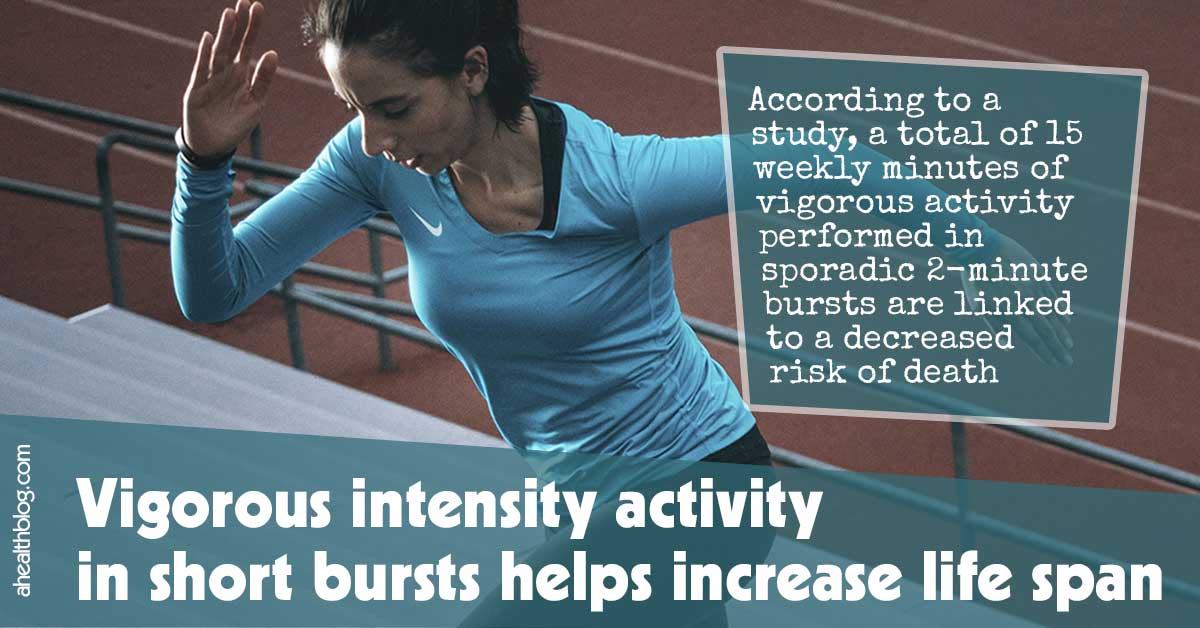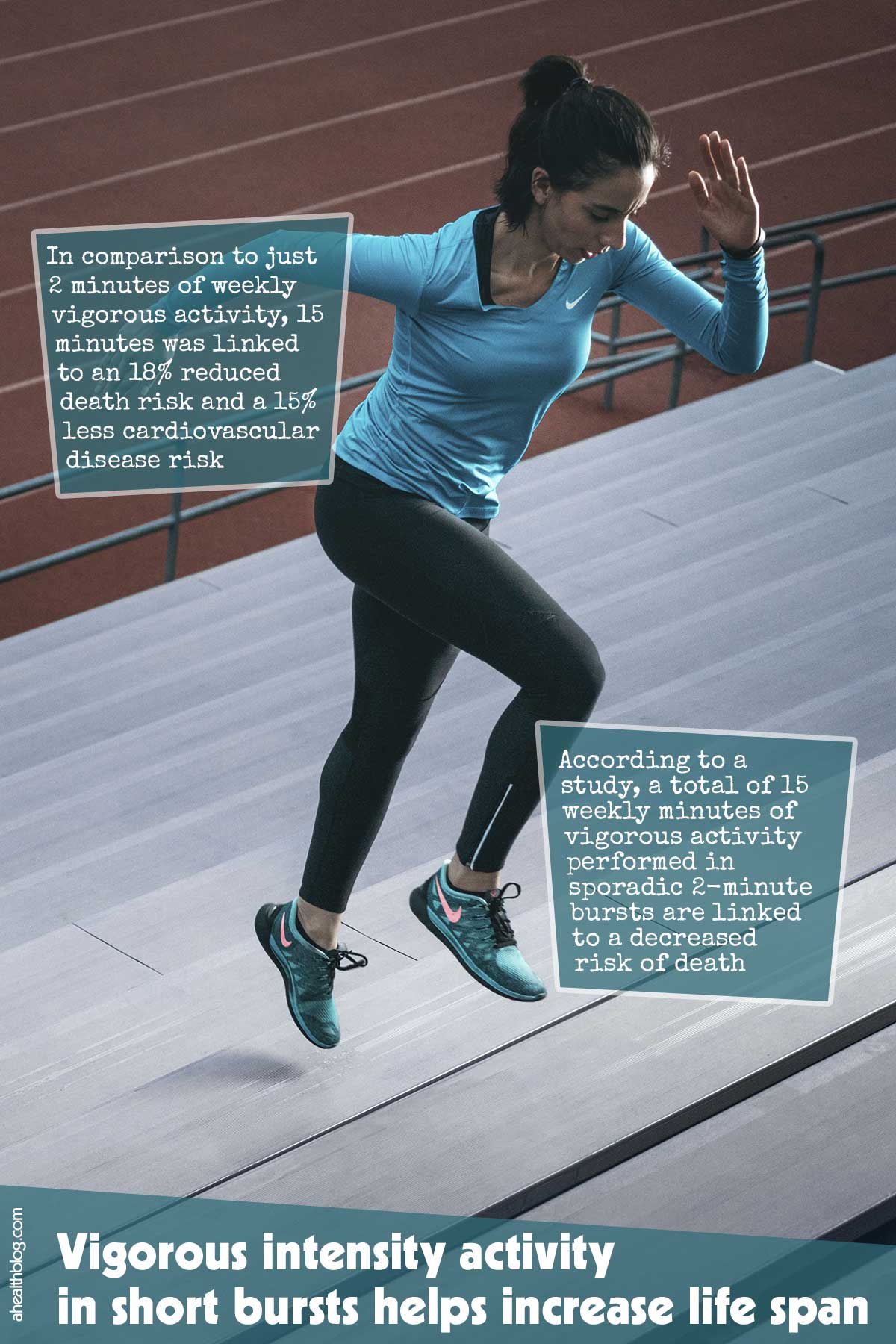According to a study, a total of 15 weekly minutes of vigorous activity performed in sporadic 2-minute bursts are linked to a decreased risk of death.1✅ JOURNAL REFERENCE
DOI: 10.1093/eurheartj/ehac572
The results suggest that engaging in short bursts of vigorous activity throughout the week can help to reduce the risk of early death. Considering that not enough time is the most common obstacle to participating in physical activity regularly, accumulating small amounts intermittently throughout the day could be an especially appealing option for individuals who are busy.
A 2nd study discovered that increasing the intensity of any volume of physical activity was linked to a reduced cardiovascular disease risk. The study indicates that it’s not only the volume of activity but also the activity intensity that’s beneficial for cardiovascular health.
Both of the studies included individuals between the ages of 40 and 69 years wearing an activity tracker for 7 consecutive days for measuring motion and intermittent activity of varying intensities throughout the day.
The 1st study enlisted 71,893 cancer or cardiovascular disease-free individuals with an average age of 62.5 years. The total amount of vigorous activity every week measured as well as the frequency of bursts that lasted 2 minutes or less.
Individuals were followed for 6.9 years on average. The associations were analyzed between frequency and volume of vigorous activity and death as a result of cancer cardiovascular, disease and all-causes, as well as the incidence of cancer and cardiovascular disease after excluding events taking place in the 1st year.
There was a reduction in risk for all 5 adverse outcomes as the frequency and volume of vigorous activity increased, with even small amounts yielding benefits. As an example, individuals without any vigorous activity had a risk of death within 5 years of 4% which was cut in half to 2% with under 10 minutes of vigorous activity every week and dropped to 1% with an hour or more.
In comparison to just 2 minutes of weekly vigorous activity, 15 minutes was linked to an 18% reduced death risk and a 15% less cardiovascular disease risk, with 12 minutes linked to a 17% reduced cancer risk.
More increases were seen with larger amounts of vigorous activity. As an example, about 53 minutes each week was linked to a 36% reduced risk of death from any cause.
With regards to frequency, short bouts of up to an average of 2 minutes of vigorous activity 4 times every day were linked to a 27% reduced risk of death. Even lower frequencies yielded health benefits: 10 weekly short bouts were linked to a 16% reduced risk of cardiovascular disease and a 17% reduced risk of cancer.
The 2nd study consisted of 88,412 individuals without any cardiovascular disease with an average age of 62 years. The researchers estimated the intensity and volume of physical activity, then analyzed the associations with cardiovascular disease such as cerebrovascular disease or ischemic heart disease. The individuals were followed for 6.8 years on average.
It was found that both greater intensity and higher amounts of physical activity were linked to reduced rates of cardiovascular disease incidence. An increase in the intensity resulted in higher cardiovascular disease reductions for the same amount of physical activity.
As an example, the cardiovascular disease rate was 14% less when moderate-to-vigorous activity made up 20% instead of 10% of activity, roughly the same as upgrading a 14-minute stroll into a brisk 7-minute walk.
The results indicate that increasing the physical activity volume isn’t the only way to decrease the risk of cardiovascular disease. Increasing the intensity was also notably significant while the increase of both was best.
This suggests that heart health can be improved just by boosting activity intensity. As an example, by increasing the pace of your daily walk or performing household chores faster.




